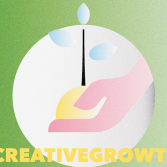Main Content

How do you define ‘growth’?
One of the key things the newly launched report from the Creative Industries Federation (CIF) – ‘Growing the UK’s Creative Industries’ – set out to do, is to explore what ‘growth’ actually means to creative enterprises.
It’s a great question, because it’s imperative to understand this to unlock further significant growth from the creative industries in the future; and it’s something the DBA and its members have been keenly exploring throughout 2018.
Redefining growth
Government has traditionally measured enterprise growth by either turnover or headcount. The CIF report – which draws from survey responses from 1000 creative enterprises – has found that although “Turnover was an important measure of growth for many creative enterprises,” most also stressed that other factors such as “increased profile and social impact” were also fundamental.
“Many design businesses view social impact as integral to the success of both their own businesses and their local supply chain,” DBA CEO Deborah Dawton is quoted as saying in CIF’s report, before adding that, “in practice this can take the form of contracting with local suppliers and freelancers, mentoring smaller businesses in their supply chain and investing in the next generation of talent.”
DBA members have really embraced this and have been sharing details of their inspiring projects at the networking event series the DBA has held for its members up and down the country this year. These events – alongside an extensive programme of training workshops – have been helping our members to positively shape their future by recognising and nurturing within their own businesses the unique characteristics that define our industry and set it apart.
The creative industries are the fastest growing sector in the UK economy. The potential for future growth is clear. But as the CIF report has found, in unlocking this the more complex picture and nuances of creative enterprises must be taken into account in any policy-making and business support targeted at creative industries.
There is also a “fear that the UK will fail to prepare the next generation for the future of work, where creative skills will be crucial across all industries” found CIF. In October, the DBA together with the All-Party Parliamentary Design and Innovation Group (APDIG), the Design and Technology Association (DATA) took steps to actively engage government and policy makers in addressing these issues. Together we jointly launched a report that sets out recommendations for how design can be embedded within our education system to equip the next generation with the skills required to confidently face the challenges of the Fourth Industrial Revolution. At the launch, Deborah spoke of the fatigue with the idea of pitting academia and design against each other.
“Why is it that academia is the first option, and students who don’t excel in that are filtered into creative subjects? In the economy and society of the future, creativity and creative skills will be the skills that aren’t automated. Let’s flip the argument on its head and give creativity the same footing as academia. The DBA is calling for equality of opportunity through a fair and equal education system where students have a fair choice of what they study.”
Sector-specific challenges to growth
In looking at the challenges creative enterprises face, CIF found that many – particularly micro businesses and freelancers – “were not undertaking enough measures to protect and exploit their IP, and were unaware of the growth opportunities that exporting their services/products might deliver.” The reasons cited for this were “primarily that both IP and the process of exporting – particularly something intangible – are complex landscapes that take time and money to navigate and get right”.
And yet Creative businesses with higher turnovers were three times more likely than those on lower turnovers to attribute their turnover growth to expanding internationally (including exporting). This is a pattern we saw in the DBA’s 2018 Annual Survey Report which indicated that the businesses with the highest fee income, were most likely to derive a greater proportion of their income from overseas work.
The DBA is here to help the UK design industry
That’s why a priority for DBA in the coming years is to support members in expanding their reach internationally and it’s why the DBA’s CEO heads the design mission on the Creative Industries Trade and Investment Board (CITIB), which has a goal to increase exports by 50% by 2023.
And when it comes to protecting IP our members benefit from legal guidance as part of their membership. Because, as the CIF report recognises – membership organisations like the DBA can offer a wide range of practical, uniquely tailored support for their sector.
In CIF’s survey, the majority of creative enterprises (80%) indicated that the support they had accessed from the likes of finance providers, lawyers and membership trade bodies, was either “crucial to business growth” or “played a partial role in business growth”. And yet the report also discovered that only a quarter of creative enterprises access support from a trade body.
From our flagship-mentoring scheme, to our library of resources, business support helplines, register of industry specific Experts, and much more, we can fast track you to the support you need to grow your business.
We're here for you, the UK's design sector
So if you are a member make sure you’re making the most of our services and always feel free to pick up the phone to find out how. And if you’ve not yet joined, we’d love to hear from you about how we can support you and meet your needs.
Contact our membership team to discuss how we can help your design business grow.
P: 0207 251 9229